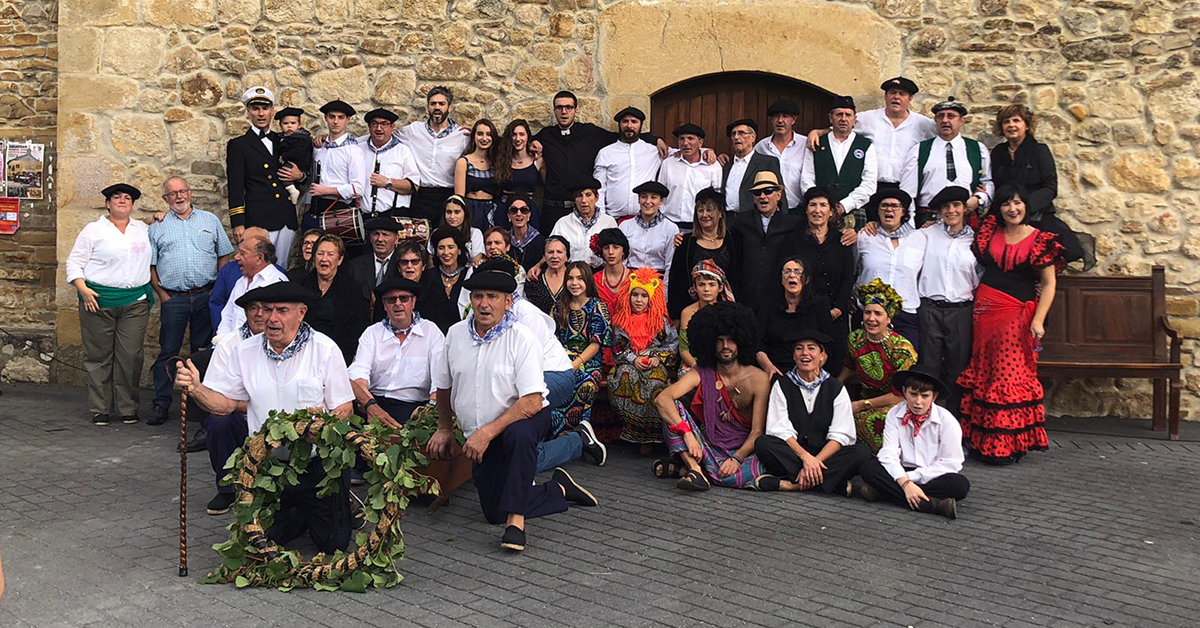Archives
On 14 September 1889, feast of the Cross, villagers in the neighbourhood of Ariatza (Muxika, Bizkaia) attended mass. After the ceremony, as requested by custom, local lads performed the aurresku —a traditional Basque ceremonial dance—. There used to be a certain rivalry among them: to be the better dancer, the one who lifted his leg higher… Back in the time, the presence of wineskins in places of worship would be considered nothing less than a heresy, and the small square, in front of the church, was as sacred as its interior. The aurreskularis —aurresku dancers— realized that folks who went for a drink of wine, while they danced, would not return to the square, and that the best dancers lost any chance of having a celebratory toast or two with their fellows. To resolve the issue, the mayor was asked to authorize the transfer of the wineskin close to the church, but he refused. Willing to do whatever it took, the young men surrounded his house, preventing him from leaving it, until he finally consented. And neighbours were subsequently able to dispose of the precious wine right next to the church, starting on the eve of the feast until the following Sunday.
Summer is prime time for the celebration of patron saint festivities, along with local festivals in neighbourhoods and at hermitages. In the old days, and until just a few decades ago, such events would be customarily organized by informal groups of youth.
As a matter of fact, we would like to take this opportunity to recall a tradition, once common in many localities of Bizkaia but which disappeared during the civil war: namely, that of the so-called zaragi-mutilak ‘lads of the wineskin’. Indeed, a group of youth, known as eskota in the region of Uribealdea, would share the cost of a full wineskin for drinking and feasting. Most notably observed in the municipality of Mungia, particularly in the neighbourhoods of Atxuri, Belako, Billela, Elgezabal, Iturribaltzaga, Laukariz, Markaida and Trobika, the custom persisted until the mid-20th century. Practically lost today, barely survives, being partly maintained, only in the neighbourhoods of Atxuri and Trobika. (more…)




